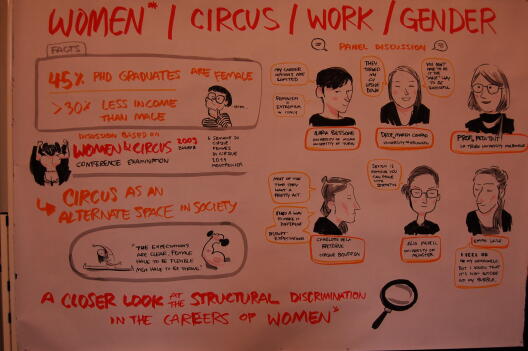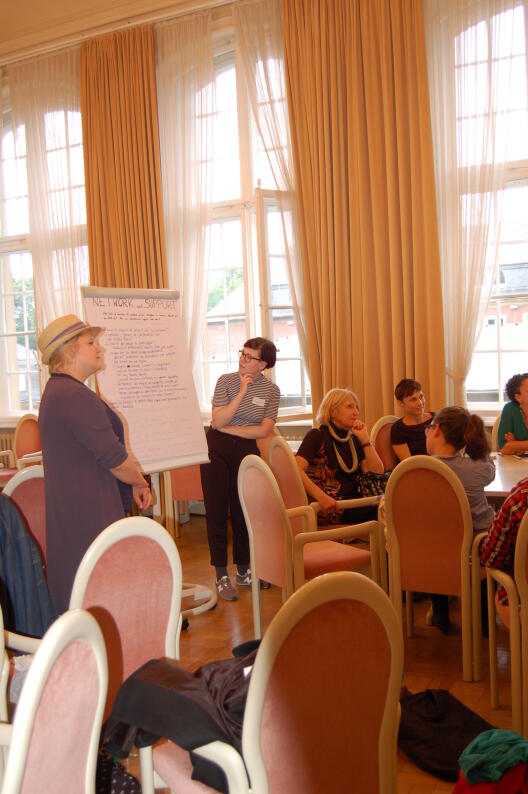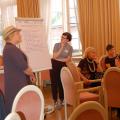Women* | Circus | Work | Gender – Space for Women in Circus (Science)



A strategic planning session on women* working in circus and circus studies took place at the conference UpSideDown - Circus and Space at June 30, 2017, organised from Zirkus|Wissenschaft, a project of PhD student Franziska Trapp. Initiater Franziska Trapp and workshop organizer Elisabeth Zimmermann are very happy about the productive exchange and interesting results and would like to address a special thanks to the equal opportunity's office of the WWU. Click here to find the equal opportunity's office report.
Structural discrimination is a phenomenon faced by women* (i.e., or anyone who is not male or does not identify as heterosexual) on a daily basis . Although legal equality and a general understanding of sex equality is the norm, there is still an underlying framework which favors heterosexual men and controls all public and private spheres of life. In academia, only twenty percent of German professors are female,* although forty-five percent of PhD graduates are women*. But unequal treatment of the sexes in practice is not limited to academia. Sexism, the interactional and structural discrimination of women,* also reveals itself in gender stereotypes that are latent in our tacit understanding of what men and women are “supposed” to do. Circus, as an alternate space in society, may be an especially productive site of contestation of gender norms.
Prevalent concepts of gender are negotiated as the body—another prominently visible dimension of gender—is, quite literally, put in the spotlight. Gender stereotyping is evident in every aspect of the circus, from performance to the art industry:
The number of female roles takes up no more than 45% of the contemporary repertoire. It seems that women remain an ideal of an eternal male concept: mother or whore, muse or a witch, and, above all, a victim. And last but not least, on average actresses earn 30% less than the actors.
In contrast, researcher Anne Quentin lists a few statistics of male activities in circus and art industry:
“Men as heads of management at:
- 92% of drama theatres
- 89% of music institutions
[…]
- 59% of national choreography centres
- […]
- 78% of dance productions were choreographed by men”
These content-related findings were already examined closely at the conferences “Women and Circus”, in 2009 in Zagreb and “Semaine du Cirque: Femmes du Cirque”, 2014 in Montpellier. Our panel discussion “Women* | Circus | Work | Gender” seeks to build on the productive results of the two conferences by taking a closer look on the level of structural discrimination in women*’s careers in circus and academia: What kind of structures and/or mechanisms work against diversity/equality in circus (studies)? What kind of personal experience do female* artists and scholars in circus (studies) have in discrimination against them? And, with regard to space: What kind of space can women* occupy in circus and circus studies? Furthermore, how can women* in academia be sensitized for and reflect responsibly sexism experiences of female* circus artists and call attention to these structural struggles?
Find further information on www.zirkuswissenschaft.de
Zirkus|Wissenschaft on Facebook
Zirkus|Wissenschaft on Twitter
Works Cited:
Anne Quentin. “From Traditional to New Circus: Women’s Place and Aesthetics.” In: Ivan Kralj (ed). Women & Circus. Zagreb, 2011.





















